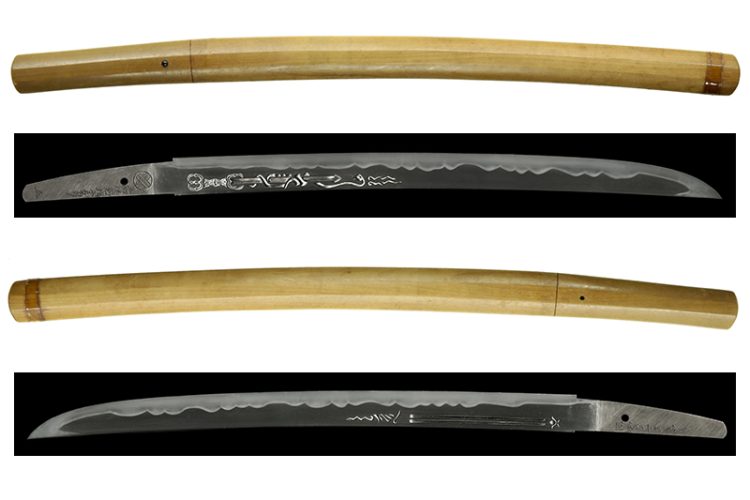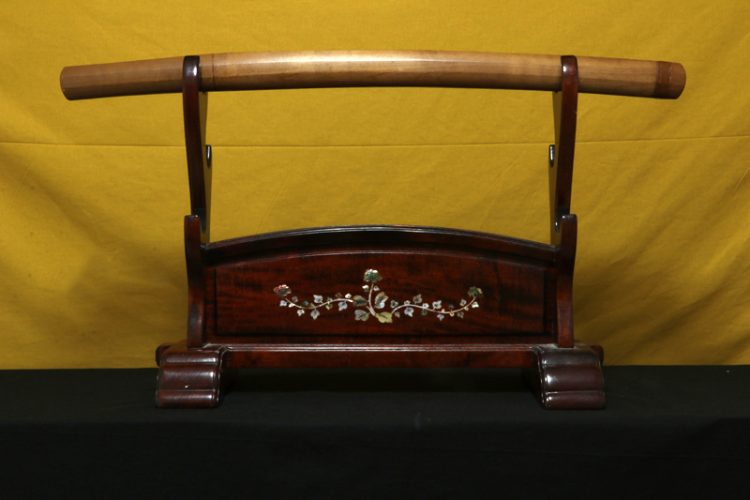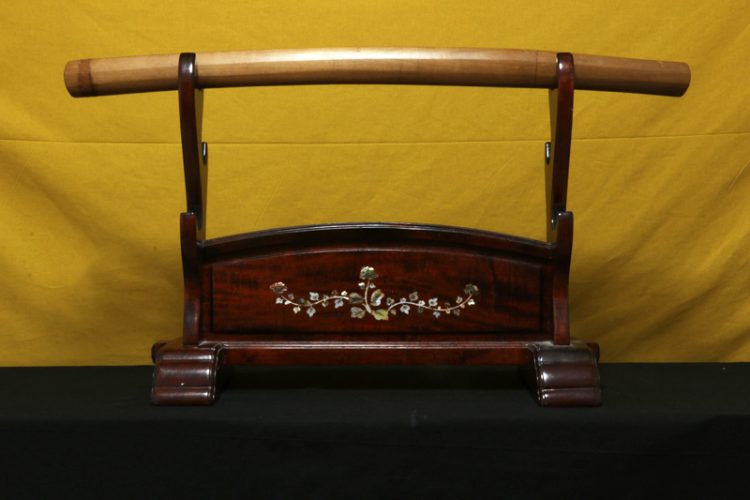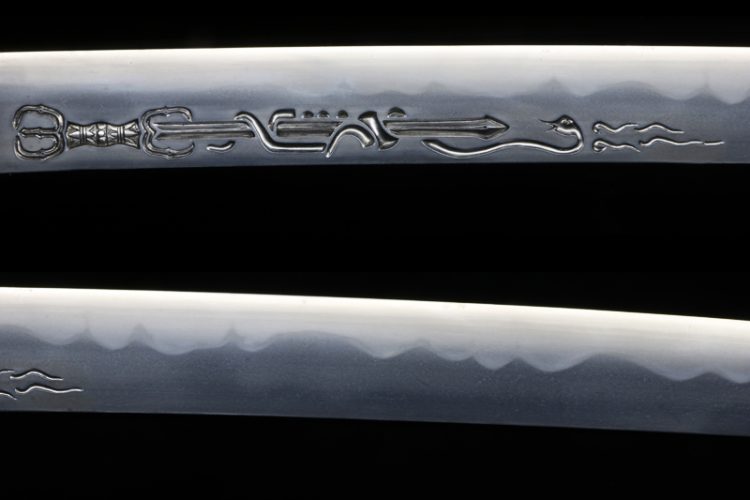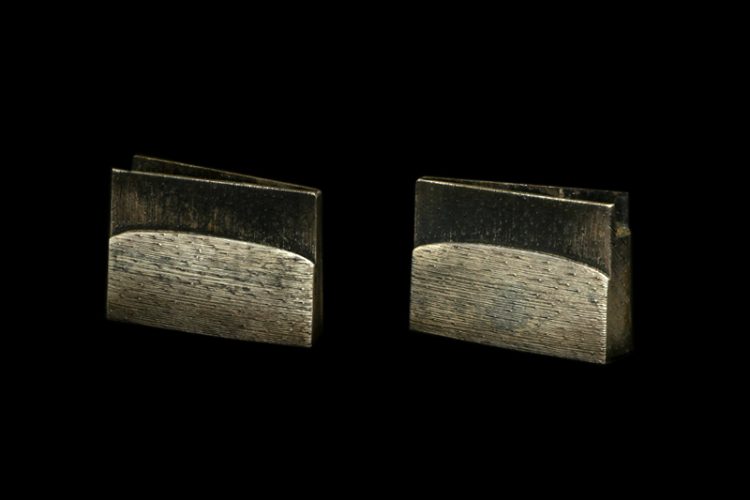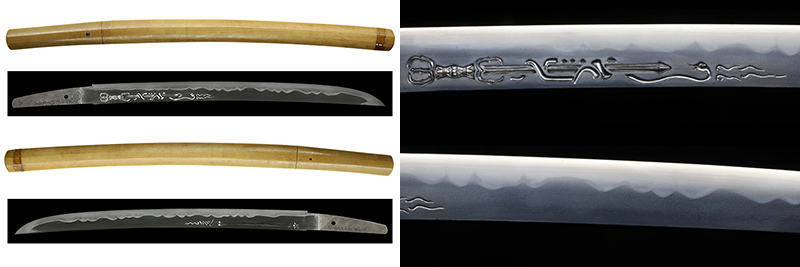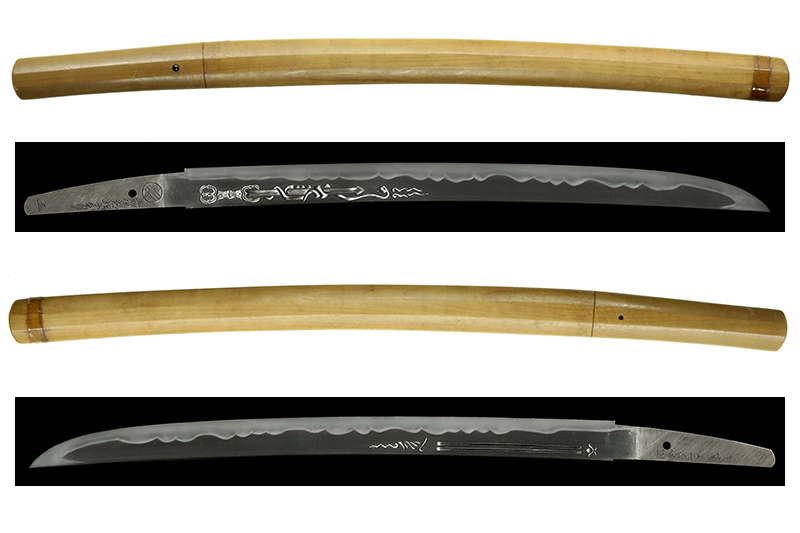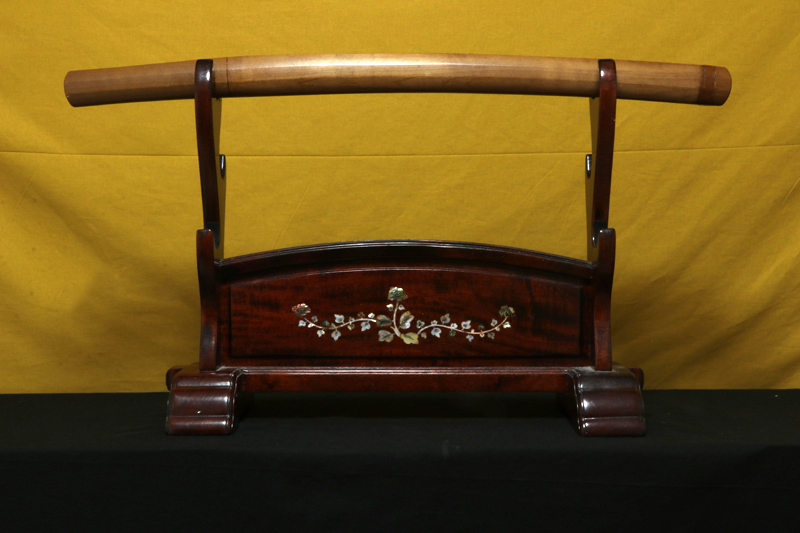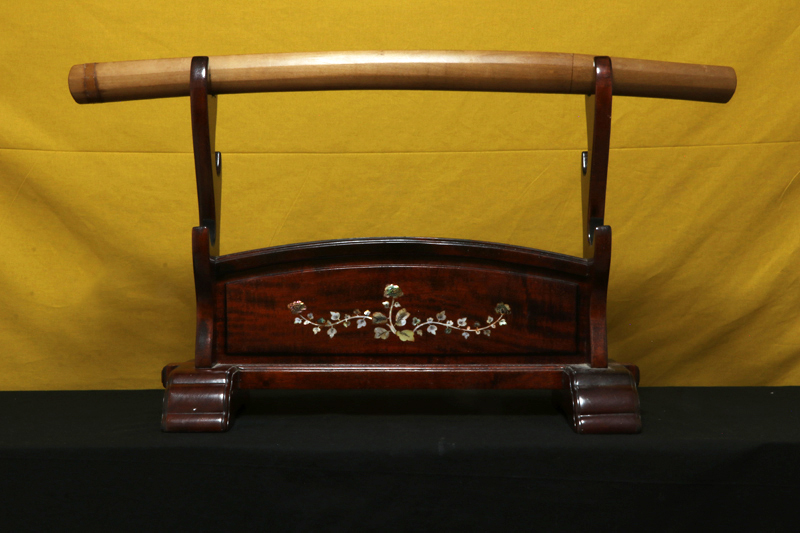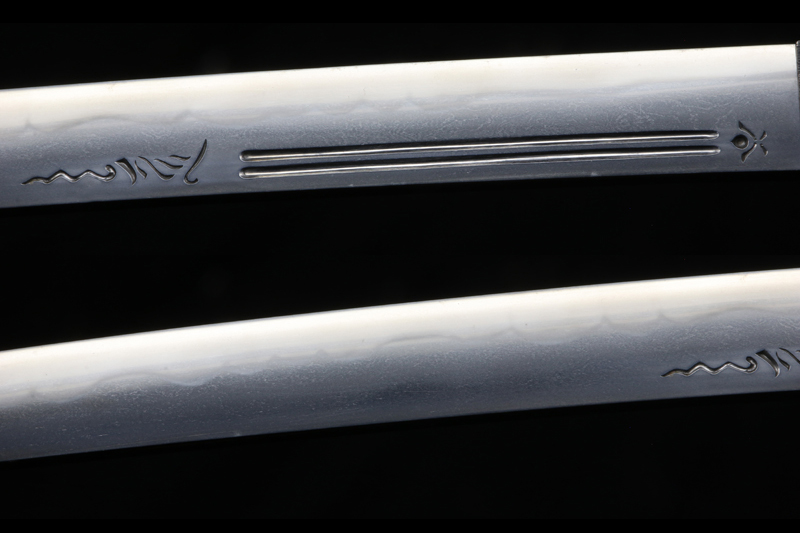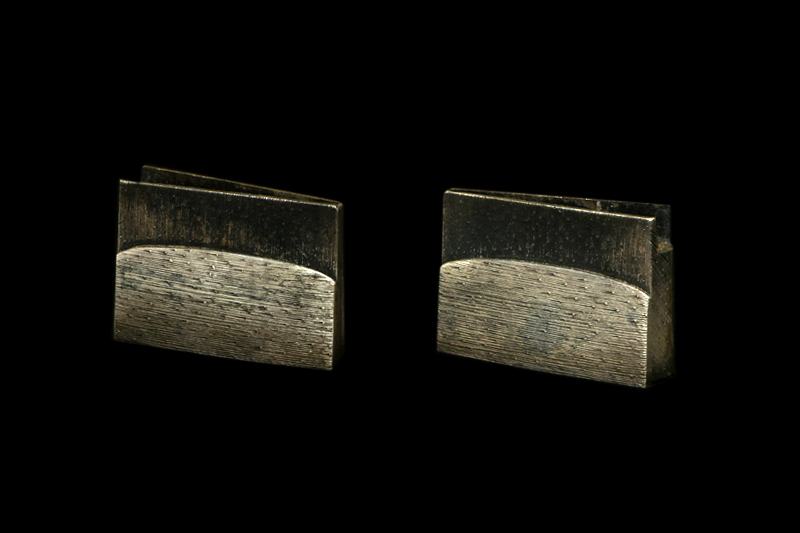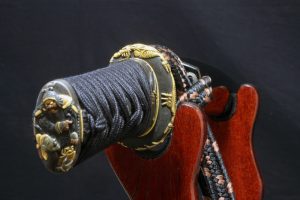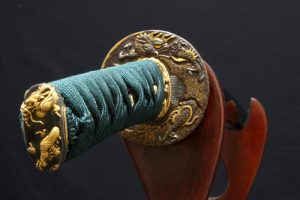説明
「刀姿 sword figure」
平造り庵棟、身幅太く重尋常、反り僅かふくら程よく枯れる。茎は生で化粧鑢がかかり、茎尻は栗尻。
「彫り物 carving」
差表に倶利伽羅(剣巻龍)、差裏には宝珠に護摩箸と不動明王の梵字が彫られる。
「地鉄 jigane」
地鉄は板目肌に小板目が交じり、地沸が付く。
「刃紋 hamon」
波紋は互の目乱れ、小互の目が交じり足入る、刃縁は小沸よくつき砂流しかかり、刃中は金筋が入る。釯子は乱れこみ小丸に返る。
「特徴 detailed」
土州住蒼龍子貞行(どしゅうじゅうそうりゅうしさだゆき)、本名は山村融(やまむら とおる)は、明治42年(1909年)に高知県南国市で生まれた現代刀工です。彼は、名工川島忠善の門人であった山村善貞に師事し、刀鍛冶としての技術を磨きました。
貞行の作風は、郷土である土佐の名工「左行秀」の技術に大きく影響を受けています。特に、彼の作品は詰んだ地鉄(非常に緻密で細かい鋼の地肌)に、匂口(刃文と地鉄の境目)を深く入れ、沸(にえ)と呼ばれる鋼の結晶を交えた美しい刃文を特徴としています。この技法により、日本刀における美と実用性の両方を兼ね備えた作品を生み出しました。彼の技術は高く評価され、新作名刀展では数多くの受賞歴を誇ります。
また、彼は金工師としてもその才能を発揮しており、刀身の彫刻だけでなく、刀装具である縁頭(ふちがしら)、鍔(つば)、目貫(めぬき)なども制作していました。これにより、刀そのものだけでなく、それを飾る装具の美しさも追求した作品を多く生み出しました。彼は、刀工としての技術のみならず、金工師としても高い評価を受けており、作品全体としての美しさと実用性を両立させています。
この作品は、豪壮な姿と、良く詰んだ地鉄(じがね)に美しく焼かれた互の目乱れ(ぐのめみだれ)の刃文が施された刀身が特徴です。さらに、貞行刀匠が得意とする彫刻が施されており、その美しさが刀の美観を一層引き立てています。特に、倶利伽羅(くりから、剣に巻きつく龍の彫刻)は見事で、貞行が持つ卓越した技術と細部へのこだわりが際立っています。このように、精緻に鍛えられた刀身と繊細な彫刻が見事に融合し、刀工としての技術と芸術性が存分に発揮された作品です。
Doshū-jū Sōryūshi Sadayuki (土州住蒼龍子貞行), born Yamamura Tōru (山村融) in 1909 (Meiji 42) in Nangoku City, Kōchi Prefecture, was a modern swordsmith. He studied under Yamamura Yoshisada, a student of the renowned craftsman Kawashima Chūzen, honing his skills as a swordsmith.
Sadayuki’s style was heavily influenced by the techniques of the Tosa region’s master craftsman, Sakyōshu. His works are particularly known for their finely forged jigane (地鉄)—the extremely dense and delicate steel surface of the blade—and for his distinctive nioiguchi (匂口), the boundary line between the blade’s pattern and the steel, which is deeply engraved and features nie (沸), sparkling steel crystals within the hamon (刃文, blade pattern). This unique combination of techniques allowed him to create swords that exemplify both beauty and practicality. His work was highly regarded, and he won numerous awards at new sword exhibitions.
In addition to his expertise as a swordsmith, Sadayuki also excelled as a kinkōshi (金工師, metal craftsman). He not only created engravings on sword blades but also produced various sword fittings such as fuchigashira (縁頭, pommel and collar), tsuba (鍔, handguard), and menuki (目貫, handle ornaments). By doing so, he sought to enhance not just the sword itself but also the aesthetic appeal of the sword’s overall appearance, including its fittings. His mastery in both sword forging and metalworking earned him widespread recognition, with his works representing a perfect balance of beauty and functionality.
This piece is characterized by its majestic appearance and a blade featuring a beautifully executed gunome-midare (wavy and irregular hamon) on a finely forged jigane (steel surface). Additionally, it is adorned with intricate carvings, a specialty of master swordsmith Sadayuki, further enhancing the blade’s aesthetic appeal. The kurikara (a carving of a dragon entwined around a sword) is particularly impressive, showcasing Sadayuki’s exceptional skill and meticulous attention to detail. The harmonious combination of the finely forged blade and delicate carvings exemplifies the swordsmith’s technical prowess and artistic expression, making this an outstanding work.
「拵 Koshirae」
白鞘。
ハバキ(habaki) :銀地金鍍金の二重。
「刀剣の状態 condition of blade」
研:良好です。
傷:欠点に成るような傷は有りません。
